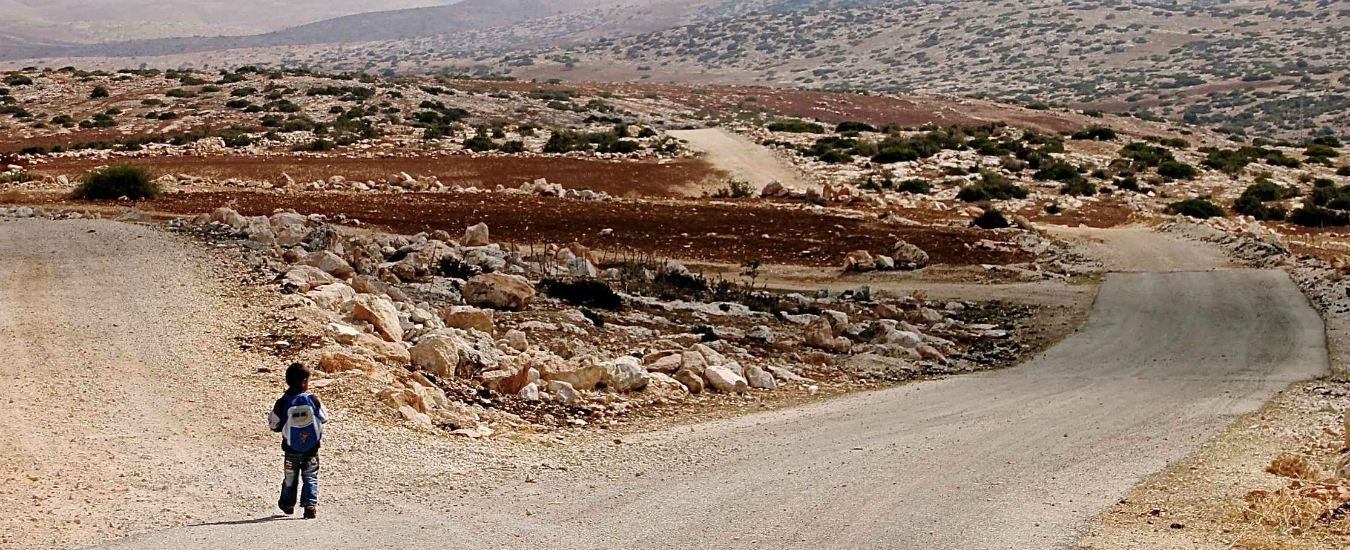South Hebron hills, you are told: ‘To exist is to resist’. But after a while, you realize that that’s just a catch phrase

I don’t remember exactly the place name. Because it wasn’t a town, in the end, or a village: it was simply an open space off the main road, with a few tents, some poorly built concrete walls and goats, chicken, dogs, a bread oven, buckets and barrels and rugs and dust and the laundry hung out to dry. And this girl, in the middle, that I remember very well instead: just graduated. In Law. At Bir Zeit, Ramallah University. And now that’s where she was, amid the goats and barrels and rugs.
And perhaps it’s a place that has no name at all, because Area C, in the West Bank, is actually all like that. In 1993, the Oslo accords divided the Palestinian territories into three different zones, with a decreasing level of self-government: and in Area C self-government is zero, because Area C – which comprises roughly 60% of the West Bank – is under Israel’s full authority. Because it borders Jordan and for Israel, is essential: it provides what military experts call strategic depth. That is, space, in the event of a ground invasion.
Today it is populated by 300 thousands Palestinians and 325 thousands settlers. And it is an arid area, basically, but majestically beautiful, valleys of sunny, barren hills, dotted with rocks and olive trees. With this winding road. And the occupation, here, is the usual occupation. While in Ramallah lots has changed and the occupation now is much more sophisticated than in the past, it is based on law and economy, rather than sheer force, here, instead, it goes on as ever: seizing land meter by meter. And consequently resistance, too, is the usual resistance. It means staying here. But literally.
Palestinians never go out all together: should settlers get into their home. In Hebron, sometimes, you come back and you find them on your couch. And so, the only choice is to stay. Even though you are a new graduate. And here you are in the middle of nowhere.
It goes without saying that international activists love Area C. Because it overlaps perfectly with their idea of the conflict and (more than that) their idea of Israelis and Palestinians: the zealous settler against the poor bedouin who makes you tea gently around a camp fire. It’s seemingly all clear, here. Here it’s easy to take side. And I see the difference between someone who is here for stealing the land and someone who is here for defending the land: but sometimes, somehow, I watch Israelis and Palestinians and truthfully they look so similar. Stubbornly locked here, on these hills barely fit for goats. The former in caravans, the latter in tents: but both busy getting water from wells. In the middle of nowhere. While the world, from the bleachers, cheers on. And all activists stop by, drink tea, coddle these kids of rugs: and urge youth to stay. Even though for a new graduate, it makes no sense.
But what she can reply? Palestinians live on aid. They play the role they are expected to play. And yet, quite often, they just want to leave these kind of zones. And not because they are traitors. Because of the same reason why we left our backcountry: because times change. And if you stay here, perhaps you keep your land: but for sure you miss your life. You are told: “to exist is to resist“. But after a while, you realize that that’s just a catch phrase. You realize that to exist poorly is to resist poorly. Like in Gaza.
It isn’t 1948 anymore. It isn’t 1967, nor 1993. This is one state, now, Israel over the last years has been building everywhere. The old battle is over. Palestinians today don’t need good sheperds, they need good lawyers. No, I see the difference between the two sides. But sometimes, I watch Israelis and Palestinians and I just think of James Joyce: “Let my country die for me”.